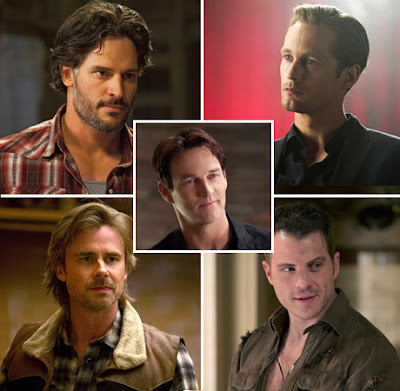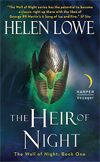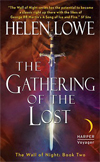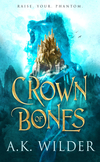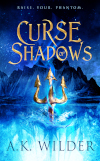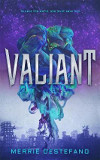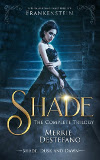 |
| Ulysses and the Sirens, by Herbert James Draper, 1909 |

 With St. Valentine's Day just past, it's hard not to have a few thoughts about romance, real and/or fictional. Here at the Sup, we often write love interests who are different species, from alternate times, dimensions or universes.
With St. Valentine's Day just past, it's hard not to have a few thoughts about romance, real and/or fictional. Here at the Sup, we often write love interests who are different species, from alternate times, dimensions or universes.Mortals falling for super heroes, vampires, shape-shifters, zombies, Mar, witches, demons, you name it, we have it. But how did this all begin?
The tendency to represent love interests as supernatural has its roots in ancient literature. Take Homer's Odyssey for example, from the 8th century BC. We have sirens, harpies, nymphs, and of course Circe, a spectacular witch, all captivating Ulysses in one way or another. And then, there are fairy tales, ie Beauty and the Beast by French novelist Gabrielle-Suzanne Barbot de Villeneuve published in 1740. Hundreds of years later, we're still enchanted!
But things really picked up for supernatural romance when Horace Walpole published The Castle of Otranto in 1764. This launched the Gothic genre, which combines elements of both horror and romance.

 After Walpole came Ann Radecliff's The Mysteries of Udolpho, Bram Stoker's Dracula and Mary Shelley's Frankenstein.
After Walpole came Ann Radecliff's The Mysteries of Udolpho, Bram Stoker's Dracula and Mary Shelley's Frankenstein.Our Speculative Fiction genre owes much to these inspirational novelists.
They led to our modern day versions of dating a monster. I think we owe a lot to Joss Whedon and his supernaturals in Buffy the Vampire Slayer for the acceptance and idealisation of mortal-supernatural couplings.
From there, Sookie Stackhouse, in Charlaine Harris's Southern Vampire Chronicles pretty much plays the field with vamp-vamp-shifter-fairy-shifter relationships, giving us a mortal eye's view on what it's really like, loving a sup.
Then there's Isacc Marion's Warm Bodies. Who wouldn't want to date this adorable dead boy, and save the human race while their at it?
Nowhere more that Paranormal Romance and Fantasy YA do we find the 'other' elevated to the role of the immortal lover, be they angel or demon from the earth, the sea, the heavens or far away dimensions.
Here are a few of my favourites.
 |
| Elena and the Brothers - from L J Smith's Vampire Diaries |
 |
| A demon and her angel |
 |
| A ghost buster and a dead girl |
 |
| A girl and her robot |
 |
| A half-Mar and her doctor |
Pop in the comments if you want to share your fav 'weird' fictional romances.
xxxKim
xxxKim
Kim Falconer's latest release is out now - The Blood in the Beginning - and Ava Sykes Novel. Find this novel in a store near you.
You can also learn more about Kim at AvaSykes.com, the 11th House Blog, and on FaceBook and Twitter.
She posts here at the Supernatural Underground on the 16th of every month and runs Save the Day Writer's Community on Facebook. Check out her daily Astro-LOA Flash horoscopes on Facebook.


